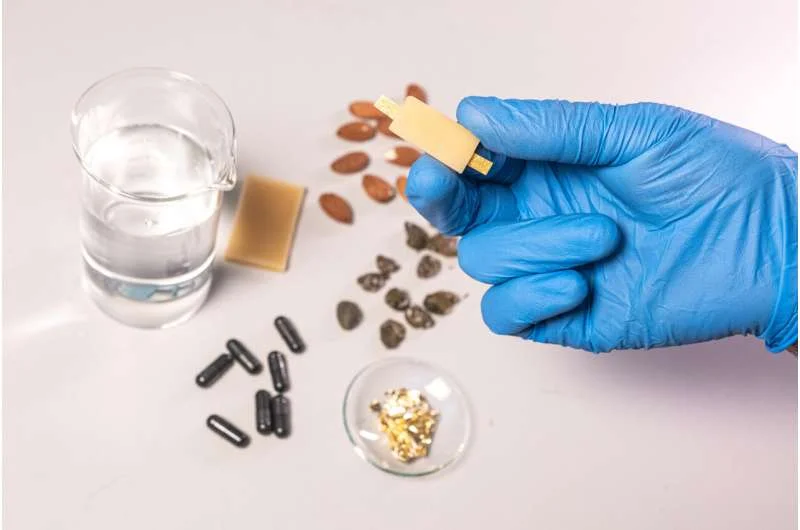A team of researchers from the Istituto Italiano di Tecnologia (IIT-Italian Institute of Technology) has created a completely edible battery using ingredients commonly consumed as part of our daily diet. A proof-of-concept battery cell was described in a recent article in the journal. Advanced Materials. It can be used in health diagnosis, food quality monitoring and edible soft robots.
Research led by Mario Caironi, Coordinator of the Print and Molecular Electronics Laboratory of the IIT Center in Milan (Italy); Caironi focuses on studying the electronic properties of foods and their byproducts to combine with edible materials and create new edible electronic materials. In 2019, Caironi won a €2 million ERC consolidation grant for the ELFO project exploring the food electronics field.
Edible electronics is an emerging field that could have a significant impact on the diagnosis and treatment of gastrointestinal diseases as well as monitoring of food quality. One of the most interesting tasks in the development of future renewable electronic systems is the application of renewable power sources.
The IIT research team was inspired by the biochemical redox reactions that occur in all living things and developed a battery that uses riboflavin (for example, vitamin B2 found in almonds) and quercetin (a food additive and ingredient in capers) as the anode. . , among others) as the cathode. Activated carbon (a widely available over-the-counter drug) was used to increase electrical conductivity, and the electrolyte was water-based. The separator required in each battery to prevent short circuits is made from nori seaweed, the species found on land. The electrodes were then encapsulated in wax producing two food-grade gold contacts (a foil used by pastry chefs) on a cellulose backing.
The battery cell operates at a voltage of 0.65 V, a voltage low enough not to cause problems to the human body if swallowed. It can deliver 48 µA for 12 minutes or a few microamps per hour, which is enough to power small electronics like low-power LEDs for a limited time.
This example of a fully edible battery will open the door to new, first-ever, new edible electronics applications.
“Potential future uses range from edible circuits and sensors that can monitor health to power sensors to monitor food storage conditions. They could also be used in children’s toys where the risk of ingestion is high given the safety level of these batteries. In fact, they already have more power and a smaller overall size. “These developments will also be tested in the future to feed edible soft robots,” said research coordinator Mario Kaironi.
“This renewable battery is also of great interest to the energy storage community. Creating safer batteries without using toxic materials is a challenge we face as the demand for them grows. It is proof that while our renewable batteries won’t power electric cars, batteries can be made from safer materials than current lithium-ion batteries. “We truly believe they will inspire other scientists to create safer batteries for a sustainable future,” said study co-author Ivan Ilich.
Source: Port Altele
